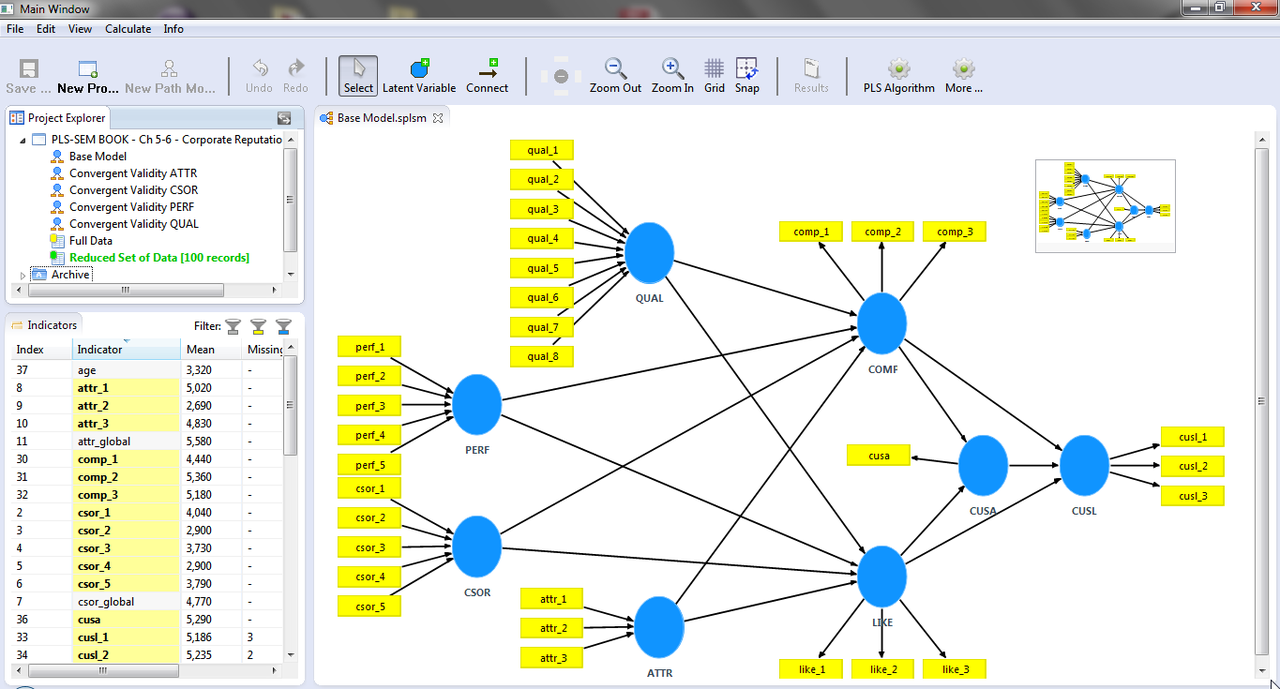Perspectives from Researchers on Case Study Design
by Janet Salmons, PhD, Research Community Manager for SAGE Methodspace
Research design is the focus for the first quarter of 2023. Find a post about case study design, and read the unfolding series of posts here.
What is a “case study” research design?
Linda Bloomberg describes a case study as:
An in-depth exploration from multiple perspectives of the richness and complexity of a particular social unit, system, or phenomenon. Its primary purpose is to generate understanding and insights in order to gain knowledge and inform professional practice, policy development, and community or social action. Case study research is typically extensive; it draws on multiple methods of data collection and involves multiple data sources.
The researcher begins by identifying a specific case or set of cases to be studied. Each case is an entity that is described within certain parameters, such as a specific time frame, place, event, and process. Hence, the case becomes a bounded system. Typically, case study researchers analyze the real-life cases that are currently in progress so that they can gather accurate information that is not lost by time.
This method culminates in the production of a detailed description of a setting and its participants, accompanied by an analysis of the data for themes, patterns, and issues. A case study is therefore both a process of inquiry about the case at hand and the product of that inquiry. (Bloomberg, 2018, p. 276)
Case studies use more than one form of data either within a research paradigm (multimodal ), or more than one form of data from different paradigms (mixed methods). As Bloomberg notes, the case study method is employed across disciplines, including education, health care, social work, history, sociology, management studies, and organizational studies. When you look at lists of most-read and most-cited articles you will find that this flexible approach is widely used and published. Here are some open-access articles about multimodal qualitative or mixed methods designs that include both qualitative and quantitative elements.
Qualitative Research with Case Studies
Brannen, J., & Nilsen, A. (2011). Comparative Biographies in Case-based Cross-national Research: Methodological Considerations. Sociology, 45(4), 603–618. https://doi.org/10.1177/0038038511406602
Abstract. This article examines some methodological issues relating to an embedded case study design adopted in a comparative cross-national study of working parents covering three levels of social context: the macro level; the workplace level; and the individual level. It addresses issues of generalizability, in particular the importance of criteria for the selection of cases in the research design and analysis phases. To illustrate the benefits of the design the article focuses on the level of individual biographies. Three exemplars of biographical trajectories and experiences are presented and discussed. It is argued that a multi-tiered design and a comparative biographical approach can add to the understanding of individual experience by placing it in context and thus yield knowledge that is of general sociological relevance by demonstrating the interrelatedness of agency and structure.
Ebneyamini, S., & Sadeghi Moghadam, M. R. (2018). Toward Developing a Framework for Conducting Case Study Research. International Journal of Qualitative Methods, 17(1). https://doi.org/10.1177/1609406918817954
Abstract. This article reviews the use of case study research for both practical and theoretical issues especially in management field with the emphasis on management of technology and innovation. Many researchers commented on the methodological issues of the case study research from their point of view thus, presenting a comprehensive framework was missing. We try representing a general framework with methodological and analytical perspective to design, develop, and conduct case study research. To test the coverage of our framework, we have analyzed articles in three major journals related to the management of technology and innovation to approve our framework. This study represents a general structure to guide, design, and fulfill a case study research with levels and steps necessary for researchers to use in their research.
Flyvbjerg, B. (2006). Five Misunderstandings About Case-Study Research. Qualitative Inquiry, 12(2), 219–245. https://doi.org/10.1177/1077800405284363
Abstract. This article examines five common misunderstandings about case-study research: (a) theoretical knowledge is more valuable than practical knowledge; (b) one cannot generalize from a single case, therefore, the single-case study cannot contribute to scientific development; (c) the case study is most useful for generating hypotheses, whereas other methods are more suitable for hypotheses testing and theory building; (d) the case study contains a bias toward verification; and (e) it is often difficult to summarize specific case studies. This article explains and corrects these misunderstandings one by one and concludes with the Kuhnian insight that a scientific discipline without a large number of thoroughly executed case studies is a discipline without systematic production of exemplars, and a discipline without exemplars is an ineffective one. Social science may be strengthened by the execution of a greater number of good case studies.
Morgan SJ, Pullon SRH, Macdonald LM, McKinlay EM, Gray BV. Case Study Observational Research: A Framework for Conducting Case Study Research Where Observation Data Are the Focus. Qualitative Health Research. 2017;27(7):1060-1068. doi:10.1177/1049732316649160
Abstract. Case study research is a comprehensive method that incorporates multiple sources of data to provide detailed accounts of complex research phenomena in real-life contexts. However, current models of case study research do not particularly distinguish the unique contribution observation data can make. Observation methods have the potential to reach beyond other methods that rely largely or solely on self-report. This article describes the distinctive characteristics of case study observational research, a modified form of Yin’s 2014 model of case study research the authors used in a study exploring interprofessional collaboration in primary care. In this approach, observation data are positioned as the central component of the research design. Case study observational research offers a promising approach for researchers in a wide range of health care settings seeking more complete understandings of complex topics, where contextual influences are of primary concern. Future research is needed to refine and evaluate the approach.
Rule, P., & John, V. M. (2015). A Necessary Dialogue: Theory in Case Study Research. International Journal of Qualitative Methods, 14(4). https://doi.org/10.1177/1609406915611575
Abstract. This article is premised on the understanding that there are multiple dimensions of the case–theory relation and examines four of these: theory of the case, theory for the case, theory from the case, and a dialogical relation between theory and case. This fourth dimension is the article’s key contribution to theorizing case study. Dialogic engagement between theory and case study creates rich potential for mutual formation and generative tension. The article argues that the process of constructing and conducting the case is theory laden, while the outcomes of the study might also have theoretical implications. Case study research that is contextually sensitive and theoretically astute can contribute not only to the application and revision of existing theory but also to the development of new theory. The case thus provides a potentially generative nexus for the engagement of theory, context, and research.
Thomas, G. (2011). A Typology for the Case Study in Social Science Following a Review of Definition, Discourse, and Structure. Qualitative Inquiry, 17(6), 511–521. https://doi.org/10.1177/1077800411409884
Abstract. The author proposes a typology for the case study following a definition wherein various layers of classificatory principle are disaggregated. First, a clear distinction is drawn between two parts: (1) the subject of the study, which is the case itself, and (2) the object, which is the analytical frame or theory through which the subject is viewed and which the subject explicates. Beyond this distinction the case study is presented as classifiable by its purposes and the approaches adopted— principally with a distinction drawn between theory-centered and illustrative study. Beyond this, there are distinctions to be drawn among various operational structures that concern comparative versus noncomparative versions of the form and the ways that the study may employ time. The typology reveals that there are numerous valid permutations of these dimensions and many trajectories, therefore, open to the case inquirer.
VanWynsberghe, R., & Khan, S. (2007). Redefining Case Study. International Journal of Qualitative Methods, 6(2), 80–94. https://doi.org/10.1177/160940690700600208
Abstract. In this paper the authors propose a more precise and encompassing definition of case study than is usually found. They support their definition by clarifying that case study is neither a method nor a methodology nor a research design as suggested by others. They use a case study prototype of their own design to propose common properties of case study and demonstrate how these properties support their definition. Next, they present several living myths about case study and refute them in relation to their definition. Finally, they discuss the interplay between the terms case study and unit of analysis to further delineate their definition of case study. The target audiences for this paper include case study researchers, research design and methods instructors, and graduate students interested in case study research.
Mixed Methods Research with Case Studies
Guetterman, T. C., & Fetters, M. D. (2018). Two Methodological Approaches to the Integration of Mixed Methods and Case Study Designs: A Systematic Review. American Behavioral Scientist, 62(7), 900–918. https://doi.org/10.1177/0002764218772641
Abstract. Case study has a tradition of collecting multiple forms of data—qualitative and quantitative—to gain a more complete understanding of the case. Case study integrates well with mixed methods, which seeks a more complete understanding through the integration of qualitative and quantitative research. We identify and characterize “mixed methods–case study designs” as mixed methods studies with a nested case study and “case study–mixed methods designs” as case studies with nested mixed methods. Based on a review of published research integrating mixed methods and case study designs, we describe key methodological features and discuss four exemplar interdisciplinary studies.
Luyt, R. (2012). A Framework for Mixing Methods in Quantitative Measurement Development, Validation, and Revision: A Case Study. Journal of Mixed Methods Research, 6(4), 294–316. https://doi.org/10.1177/1558689811427912
Abstract. A framework for quantitative measurement development, validation, and revision that incorporates both qualitative and quantitative methods is introduced. It extends and adapts Adcock and Collier’s work, and thus, facilitates understanding of quantitative measurement development, validation, and revision as an integrated and cyclical set of procedures best achieved through mixed methods research. It also offers a systematic guide concerning how these procedures may be undertaken through detailing key “stages,” “levels,” and practical “tasks.” A case study illustrates how qualitative and quantitative methods may be mixed through the use of the proposed framework in the cross-cultural content- and construct-related validation and subsequent revision of a quantitative measure. The contribution of this article to mixed methods research literature is briefly discussed.
Mason, W., Morris, K., Webb, C., Daniels, B., Featherstone, B., Bywaters, P., Mirza, N., Hooper, J., Brady, G., Bunting, L., & Scourfield, J. (2020). Toward Full Integration of Quantitative and Qualitative Methods in Case Study Research: Insights From Investigating Child Welfare Inequalities. Journal of Mixed Methods Research, 14(2), 164–183. https://doi.org/10.1177/1558689819857972
Abstract. Delineation of the full integration of quantitative and qualitative methods throughout all stages of multisite mixed methods case study projects remains a gap in the methodological literature. This article offers advances to the field of mixed methods by detailing the application and integration of mixed methods throughout all stages of one such project; a study of child welfare inequalities. By offering a critical discussion of site selection and the management of confirmatory, expansionary and discordant data, this article contributes to the limited body of mixed methods exemplars specific to this field. We propose that our mixed methods approach provided distinctive insights into a complex social problem, offering expanded understandings of the relationship between poverty, child abuse, and neglect.
Onghena, P., Maes, B., & Heyvaert, M. (2019). Mixed Methods Single Case Research: State of the Art and Future Directions. Journal of Mixed Methods Research, 13(4), 461–480. https://doi.org/10.1177/1558689818789530
Abstract. Mixed methods single case research (MMSCR) is research in which single case experimental and qualitative case study methodologies, and their accompanying sets of methods and techniques, are integrated to answer research questions that concern a single case. This article discusses the historical roots and the distinct nature of MMSCR, the kinds of knowledge MMSCR produces, its philosophical underpinnings, examples of MMSCR, and the trustworthiness and validity of MMSCR. Methodological challenges relate to the development of a critical appraisal tool for MMSCR, to the team work that is involved in designing and conducting MMSCR studies, and to the application of mixed methods research synthesis for multiple case studies and single case experiments.
Sharp, J. L., Mobley, C., Hammond, C., Withington, C., Drew, S., Stringfield, S., & Stipanovic, N. (2012). A Mixed Methods Sampling Methodology for a Multisite Case Study. Journal of Mixed Methods Research, 6(1), 34–54. https://doi.org/10.1177/1558689811417133
Abstract. The flexibility of mixed methods research strategies makes such approaches especially suitable for multisite case studies. Yet the utilization of mixed methods to select sites for these studies is rarely reported. The authors describe their pragmatic mixed methods approach to select a sample for their multisite mixed methods case study of a statewide education policy initiative in the United States. The authors designed a four-stage sequential mixed methods site selection strategy to select eight sites in order to capture the broader context of the research, as well as any contextual nuances that shape policy implementation. The authors anticipate that their experience would provide guidance to other mixed methods researchers seeking to maximize the rigor of their multisite case study sampling designs.
Bloomberg, L. (2018). Case study. In B. B. Frey (Ed.), The SAGE encyclopedia of educational research, measurement, and evaluation. https://doi.org/10.4135/9781506326139


























Do you think about research questions as an insider, outsider, or somewhere in between? Why is positionality important in online research?